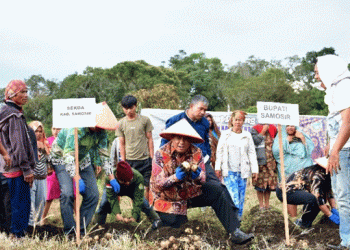Potato irrigation typically involves several methods that can be used either individually or in combination, depending on the specific needs and conditions of the potato crop. Here are some of the basic methods of potato irrigation:
Surface Irrigation: This method involves flooding the field with water and allowing it to infiltrate into the soil. Surface irrigation can be done through furrow irrigation, border irrigation, or basin irrigation. In this method, water is applied in a series of basins or furrows along the length of the field, and the potato plants absorb water from the soil.
Sprinkler Irrigation: This method involves the use of sprinklers to distribute water over the potato crop. Sprinkler irrigation can be done with either overhead or lateral sprinklers. Overhead sprinklers spray water over the entire field, while lateral sprinklers distribute water through a network of pipes and sprinkler heads placed along the length of the field.
Drip Irrigation: This method involves the slow and steady application of water directly to the roots of the potato plants through a system of drip lines or emitters. Drip irrigation is highly efficient as it minimizes water loss due to evaporation and runoff.
Subsurface Irrigation: This method involves placing water beneath the soil surface, usually through buried drip lines or porous pipes. Subsurface irrigation is highly efficient as it reduces water loss due to evaporation and runoff and promotes better water use by the potato plants.
Overall, the choice of irrigation method depends on various factors, such as soil type, water availability, crop stage, and climate conditions. A combination of these methods can be used to achieve optimal potato crop yield and quality.








